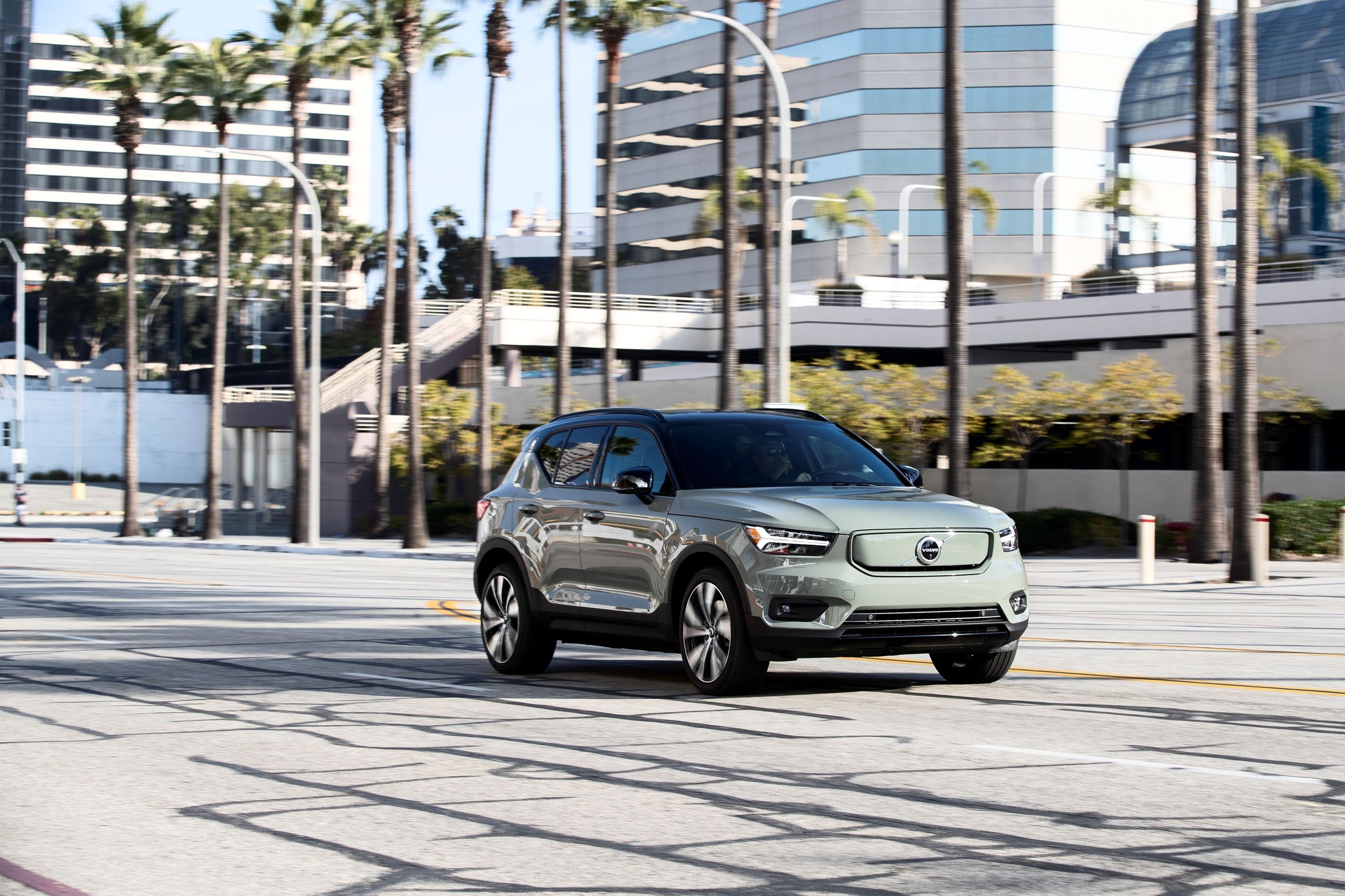
Volvo held it first Volvo Cars Tech Moment presentation on June 30, and though the live event was about its new operating system (built with help from Android, Linux, Autosar and QNX), and how it wants to collect data in real time, the overarching idea was safety, simplicity and serenity. All of the new tech will debut on its first all-electric flagship SUV, which will launch next year. Volvo even showed off a vehicle it called Concept Recharge, which looks similar to the XC40 Recharge, as a peek into where all this new tech will go.
We'll start with the new operating system, as that leads into the data collection. This will be the second-generation Volvo Cars system, and the main controller will "act as an umbrella for electric Volvo cars." That means one brain will take all the information from the sensors, map data, the cloud and elsewhere to reduce complexity in the system. It was developed by Volvo.
"By developing software in-house we can boost development speeds and improve your Volvo faster than we can today," said Henrik Green, chief technology officer. "Just like on your smartphone or computer, new software and features can be rolled out swiftly through over-the-air updates, making your Volvo better and even more enjoyable over time."
That one brain is made up of three computers, supporting operating vision processing (from the new Lidar system) and artificial intelligence, general computing and infotainment. Tech company NVIDIA is helping with the core system while Google is a partner on its infotainment. Volvo also opened up the software to accept third-party developers. That's cool because as we know from our phones, the big companies can only focus on a certain number of applications, and some of the best come from other developers.
Volvo wants to use that new system for instant data collection, which sounds like a big deal, and might be scary to some. First, it will be an opt-in system, so you'll have to give permission for it to acquire and analyze the data. Second, Volvo will use this to send more over-the-air updates with greater frequency, leading to smoother operations and more features.
It will also be quicker to roll out autonomous driving technology. With millions of miles driven by thousands of Volvo drivers, engineers can validate features, especially for specific geographic locations, faster.
"With help from real-life data we can speed up our development processes and go from years to days," said Odgard Andersson, CEO at Zenseact, Volvo Cars' autonomous driving software arm. "As real-time collection generates a lot more data, we can create better and higher-quality data sets that allow us to make better and quicker decisions on the next advancements in safety. We're taking a giant leap to increase safety in and around our cars."
A factory will collect and analyze that data, and using artificial intelligence will crunch it "in record time." Volvo says the center will eventually contain over 200 PebiBytes (225 million gigabytes) of information, which is a little scary. Volvo says that over time all of this hardware, software and date will allow the car to take over, "in case the driver does not respond in life-threatening situations after repeated warnings."
The next Volvo flagship coming in 2022 will be a home for all of this tech, and we're hoping the Concept Recharge is a good indication of what this new car will look like. The basic form is of a tall wagon, but with the batteries in the floor like the new Volkswagen bus, Volvo showed how it can lower the roof, extend the A-pillar and leave a ton more space for passengers. The rear seats are elevated so every passenger has the same eyeline. It even showed adjustable seat bottoms to move small children into a safe spot in relation to the seatbelt.
It has no grille, as it's powered by electricity. But it does sport the Volvo slash in the middle, as well as insect-like headlights that retract to form the daytime running lights. Those headlights, as well as the taillights, feature a welcome animation as you walk up to the vehicle. It also sports a Lidar sensor at the top of the windshield.
The center stack is dominated by the 15-inch, portrait-style infotainment screen with the new system powered by the recently updated Android OS with Google Assistant. Google Maps and Google Play are built in. The driver gets a smaller screen just above the steering wheel with relevant information, as well as a head-up display.
The company also shared some interesting news on its battery operations, which just joined with Swedish company Northvolt "to further increase the energy density in its battery cells by up to 50% compared to what's on the market today." It says it can see a 1,000-km (621-mile) range vehicle in the near future.
Volvo truly wants a world where car accidents just don't happen. With the addition of tech like this, we can be sure the company's own crash numbers will go down, but we're guessing it'll still be a few decades before we get to zero crashes and zero emissions. Other automakers will be following its progress closely.
